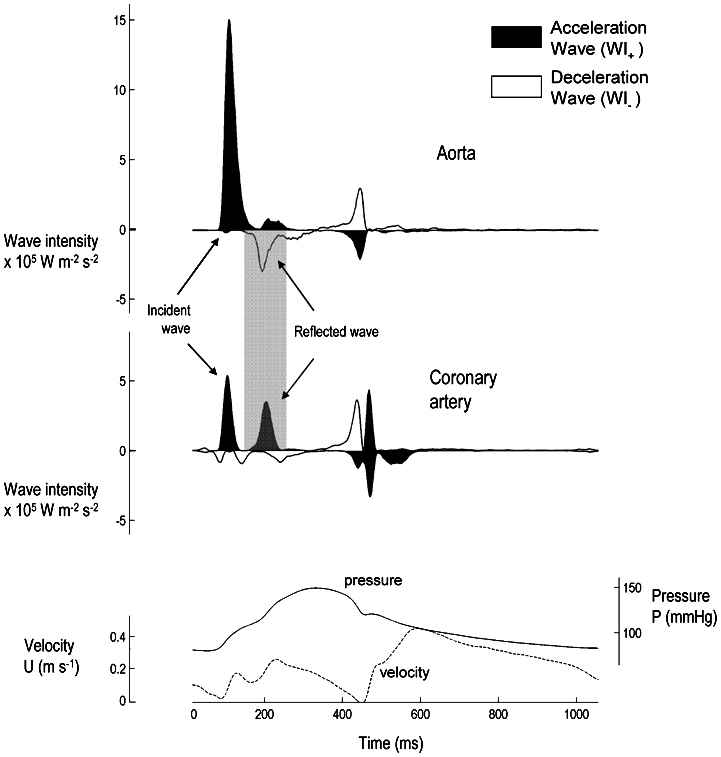06.06 EVIDENCE OF AUGMENTATION OF SYSTOLIC CORONARY BLOOD FLOW BY RETROGRADE WAVE REFLECTION TRAVELLING-BACK FROM THE PROXIMAL AORTA
- DOI
- 10.1016/j.artres.2008.08.302How to use a DOI?
- Open Access
- This is an open access article distributed under the CC BY-NC license.
Background: It has been proposed that blood flow in coronary arteries is augmented by waves travelling-back from the distal aorta. However, these waves have never been identified. We used wave intensity analysis to time and quantify reflected waves travelling from the proximal aorta into coronary arteries, and assess their contribution to changes in coronary blood flow with ageing and hypertension.
Method and Results: In 19 subjects (age 35–73 years) sensor-tipped intra-arterial wires were used to measure pressure and Doppler velocity in the coronary arteries and at proximal aortic root. Separated wave intensity analysis was used to identify and quantify incident and reflected waves. The reflected wave in the proximal aorta occurred in systole in all subjects (159±12ms after the ECG-R-wave) and could be seen later in the coronary arteries: left main stem (186.8±10.7 ms), circumflex (188.8±7.4 ms) and left anterior descending (194.4±7.7 ms). In the coronary arteries the mean reflected wave represented 20.3±2.1% of the incident wave magnitude, and elicited a 38.9±8.4% instantaneous increase in systolic coronary blood flow velocity (0.2 to 0.28m/s, p<0.002). This augmentation was seen to increase with increasing age (r=0.51, p<0.03), probably due to an increase in aortic stiffening (pulse wave velocity, r= 0.77, p<0.001).
Conclusions: Reflected wave can be followed travelling-back from the proximal aorta into the coronary arteries. These reflected waves augment coronary systolic blood flow. With increasing age the degree of augmentation of systolic coronary blood flow is increased.

Cite this article
TY - JOUR AU - J.E. Davies AU - Z.I. Whinnett AU - N. Hadjiloizou AU - J. Aguado-Sierra AU - K. Parker AU - D.P. Francis AU - A.D. Hughes AU - J. Mayet PY - 2008 DA - 2008/09/15 TI - 06.06 EVIDENCE OF AUGMENTATION OF SYSTOLIC CORONARY BLOOD FLOW BY RETROGRADE WAVE REFLECTION TRAVELLING-BACK FROM THE PROXIMAL AORTA JO - Artery Research SP - 90 EP - 91 VL - 2 IS - 3 SN - 1876-4401 UR - https://doi.org/10.1016/j.artres.2008.08.302 DO - 10.1016/j.artres.2008.08.302 ID - Davies2008 ER -
